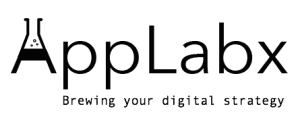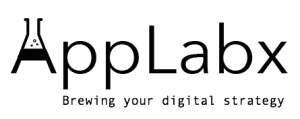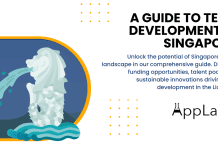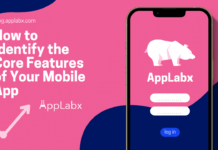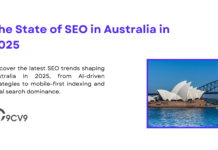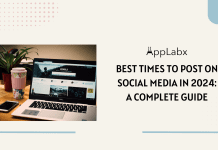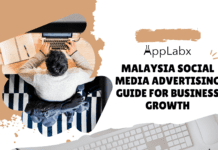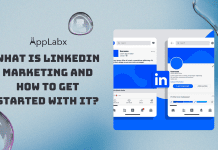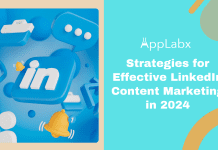Key Takeaways
- Leverage Precision Targeting: Tailor your LinkedIn strategy for Singapore’s dynamic market. Use advanced targeting to connect with decision-makers, ensuring your content resonates.
- Engage Authentically: Forge meaningful connections through genuine interactions. Share insightful content that addresses local challenges, building trust and credibility.
- Measure ROI Strategically: Utilize data analytics to track conversions, calculate ROI, and refine your approach. Let insights guide your LinkedIn strategy for tangible sales outcomes in Singapore.
In the bustling urban landscape of Singapore, where businesses compete fervently to capture the attention of a discerning clientele, the realm of marketing has evolved into an art form that demands precision, innovation, and strategic prowess.
As the digital age continues its relentless advance, one platform has emerged as a beacon of opportunity for businesses seeking not just visibility, but tangible and measurable sales outcomes: LinkedIn.
Welcome to a comprehensive exploration of “Crafting an Effective LinkedIn Marketing Strategy for Businesses in Singapore to Get More Sales,” where we journey through the heart of this dynamic city-state’s business landscape, uncovering the transformative potential of a tailored LinkedIn marketing approach.
Picture a city adorned with towering skyscrapers that mirror the aspirations of its bustling populace.
Singapore, a global financial hub and technological trailblazer, offers a uniquely conducive environment for businesses to flourish.
Yet, in this sea of opportunities, the challenge lies in carving a distinct identity amidst the competition.
Enter LinkedIn, the digital realm where professionals converge, connect, and collaborate.
But this platform is not merely a digital Rolodex; it’s a vibrant marketplace where conversations translate into transactions, and where a well-crafted LinkedIn marketing strategy can unveil a world of sales possibilities.
The journey begins with understanding the very fabric of the Singaporean business landscape.
From the bustling streets of Orchard Road to the sleek skyscrapers of Marina Bay, industries ranging from finance, technology, and healthcare to logistics and real estate interlace seamlessly.
As the sun rises on a city that never sleeps, businesses strive to capture the attention of both local clientele and global partners. LinkedIn, with its 2.5 million users in Singapore, emerges as a virtual boardroom where these conversations unfold.
But this isn’t just about having a presence; it’s about harnessing the power of strategic storytelling and nuanced engagement to move the needle on sales charts.
In this age of data-driven decision-making, setting clear sales objectives isn’t just advisable – it’s imperative.
As you delve into the intricacies of this blog, you’ll find that crafting an effective LinkedIn marketing strategy isn’t a shot in the dark; it’s a deliberate series of actions designed to achieve specific outcomes.
Whether your goal is to amplify brand visibility, nurture leads into conversions, or establish your business as a thought leader, the strategies you employ on LinkedIn will serve as the foundation of your sales triumph.
Imagine standing at the crossroads of opportunity and alignment, where your products or services meet the very needs of your target audience. Identifying and targeting the right audience isn’t just a matter of demographics; it’s about understanding the aspirations, challenges, and pain points that govern their decisions.
Through this blog, you’ll embark on a journey of audience segmentation and personalized content creation, connecting the dots between your offerings and the solutions that Singaporean businesses seek.
But crafting an effective LinkedIn marketing strategy goes beyond merely optimizing profiles and publishing content. It’s about weaving a narrative that resonates with your audience, an intricate tapestry of value proposition and relatability.
In this digital era, your LinkedIn profile is more than a digital business card – it’s a virtual showroom that beckons potential clients to explore further. From compelling headlines that spark curiosity to summaries that weave stories of success, every element plays a role in the sales journey.
Join us as we delve into the heart of content strategy, exploring the art of delivering value through every piece of content you share. It’s about channeling the spirit of innovation that defines Singapore’s skyline into crafting LinkedIn posts, articles, and videos that captivate and engage. The journey doesn’t stop at content creation; it extends to engagement and relationship-building, where a genuine connection on LinkedIn can lead to a handshake in a boardroom or a virtual deal-signing across borders.
And as the sun sets on the Singaporean skyline, we illuminate the path to utilizing LinkedIn’s advertising features to supercharge your sales efforts. Sponsored content, InMail campaigns, and precise targeting options transform your strategy from organic to orchestrated, amplifying your reach and impact.
But it’s not just about dollars spent; it’s about crafting ads that speak to the aspirations of Singaporean businesses, nurturing them towards that coveted “Connect” or “Follow” button – and ultimately, towards a sales-driven destination.
Amidst this labyrinth of strategies and tactics lies the compass that guides your journey: data. In a landscape defined by data analytics and insights, measuring the impact of your LinkedIn marketing strategy is the cornerstone of evolution.
Discover the metrics that matter, from lead generation to conversion rates, and embark on a voyage of iterative enhancement that’s tailor-made for the dynamic Singaporean market.
In the heart of this narrative, case studies shine like beacons of inspiration, showing you the art and science of crafting an effective LinkedIn marketing strategy for sales in Singapore.
Real-world success stories illuminate the strategies that yielded growth, the tactics that sparked engagement, and the outcomes that redefined possibilities.
These case studies aren’t just tales of triumph; they’re blueprints of excellence that empower you to steer your business towards newfound sales horizons.
So, embark on this odyssey of strategic insight, creativity, and data-driven empowerment.
As the digital era shapes the destiny of businesses in Singapore, your LinkedIn marketing strategy is the vessel that navigates these uncharted waters.
Welcome aboard as we set sail on a journey that transcends mere visibility – a journey that leads, unequivocally, to more sales in the vibrant, dynamic, and limitless landscape of Singapore.
Before we write more about this article, we like to share who we are.
About AppLabx
From developing a solid marketing plan on LinkedIn to creating compelling content on LinkedIn, optimizing for search engines, leveraging social media, and utilizing paid advertising on LinkedIn, AppLabx offers a comprehensive suite of digital marketing services on LinkedIn designed to drive growth and profitability for your business.
AppLabx is well known for helping companies and startups use LinkedIn Marketing to drive web traffic to their websites and web apps.
At AppLabx, we understand that no two businesses are alike. That’s why we take a personalized approach to every project, working closely with our clients to understand their unique needs and goals, and developing customized strategies to help them achieve success.
If you need a digital consultation, then send in an inquiry here.
Effective LinkedIn Marketing Strategy for Businesses in Singapore To Get More Sales
- Understanding the Singaporean Business Landscape
- Defining Clear Sales Objectives
- Identifying and Targeting the Right Audience
- Optimizing LinkedIn Profiles for Sales
- Content Strategy for Sales Conversion
- Leveraging LinkedIn Features for Sales
- Building Meaningful Connections and Networks
- Using LinkedIn Ads for Sales Generation
- Measuring Sales Impact and ROI
1. Understanding the Singaporean Business Landscape
Singapore, often referred to as the “Lion City” or the “Little Red Dot,” stands as a dynamic global financial hub, technological innovation center, and a melting pot of cultures.
Its strategic location, pro-business policies, and well-developed infrastructure have transformed it into a thriving business ecosystem.
As we delve into understanding the Singaporean business landscape, we’ll explore the diverse sectors, economic indicators, and business opportunities that shape this vibrant city-state.
1. Economic Overview and Growth
Source: According to the World Bank, Singapore’s GDP was $466 billion in 2022.
Singapore’s economy is a testament to its resilience and adaptability. Despite its relatively small size, the country ranks among the world’s wealthiest nations with a high standard of living. The nation’s consistent economic growth has been largely driven by key industries such as finance, manufacturing, technology, and tourism. Over the years, Singapore has established itself as a gateway to the Asia-Pacific region, attracting multinational corporations seeking to tap into its strategic location.
2. Thriving Industries
a. Finance and Banking
Source: The Monetary Authority of Singapore (MAS) reports that as of 2021, there are over 200 banks in Singapore, including 4 major local banks and numerous international banks.
Singapore is renowned for its robust financial services sector. The city-state boasts a well-regulated and globally recognized financial hub, offering a range of services from asset management and wealth management to investment banking and fintech innovation. With its efficient regulatory environment, Singapore has become a hotbed for financial institutions seeking to establish a strong presence in Asia.
b. Technology and Innovation
Singapore’s dedication to technological advancement has paved the way for an emerging tech landscape. Government initiatives like the Smart Nation initiative have accelerated digital transformation across sectors, leading to the rise of startups, innovation hubs, and research centers. Companies in areas like artificial intelligence, blockchain, and biotechnology are flourishing, attracting both local and international investments.
c. Manufacturing and Logistics
Source: A report wrote that manufacturing contributes around 20% to the country’s GDP.
Singapore’s manufacturing sector remains integral to its economy. The nation has evolved from labor-intensive industries to high-value manufacturing, including electronics, aerospace, and precision engineering. Its strategic location, well-connected infrastructure, and efficient port have established Singapore as a key logistics and distribution hub in the region.
3. Business Environment and Ease of Doing Business
Source: Statista wrote the Ease of Doing Business Index ranks Singapore as one of the top countries for ease of doing business.
Singapore’s business-friendly policies, transparent legal system, and efficient bureaucracy make it an ideal destination for entrepreneurs and businesses alike. The ease of starting a business, obtaining necessary permits, and accessing capital contribute to its reputation as a global business hub. Additionally, low corporate tax rates and an extensive network of free trade agreements further enhance its attractiveness.
4. International Trade and Connectivity
Singapore’s strategic location at the crossroads of major global trade routes has propelled its status as a trade and logistics hub. Its well-established port and airports facilitate seamless movement of goods, making it an ideal location for businesses engaged in import and export activities. The nation’s commitment to free trade agreements fosters a favorable environment for international commerce.
5. Business Opportunities for LinkedIn Marketing
Example: Consider a Singapore-based tech startup aiming to expand its market reach globally. By leveraging LinkedIn’s networking capabilities, the startup can connect with industry professionals, potential investors, and partners to scale its operations. Sharing thought leadership content on LinkedIn can position the startup as an industry expert and attract business inquiries.
In conclusion, understanding the Singaporean business landscape requires recognizing its strengths, strategic industries, and business-friendly policies.
As a global hub for finance, technology, manufacturing, and trade, Singapore offers a wealth of opportunities for businesses to thrive and expand their market presence.
Whether you’re a multinational corporation or a burgeoning startup, navigating this dynamic landscape demands a well-crafted LinkedIn marketing strategy that aligns with the city-state’s unique economic vibrancy and business ethos.
2. Defining Clear Sales Objectives
In the dynamic business ecosystem of Singapore, where competition is fierce and opportunities abound, the path to sales success begins with a clear and well-defined set of objectives.
Understanding the power of setting precise sales goals and aligning them with your LinkedIn marketing strategy can propel your business to new heights.
In this section, we delve into the art and science of Defining Clear Sales Objectives tailored to the vibrant Singaporean market.
1. The Significance of Clear Sales Objectives
Setting clear sales objectives serves as the compass that guides your LinkedIn marketing efforts. It provides your team with a focused direction and measurable targets to work towards, ensuring that every action taken aligns with the overarching business goals.
Without well-defined objectives, your LinkedIn marketing strategy risks becoming aimless, lacking the purpose and precision needed to drive meaningful sales outcomes.
2. Types of Sales Objectives
a. Lead Generation
Source: A report indicates that 63% of marketers consider generating traffic and leads to be their top marketing challenge.
For businesses seeking to expand their customer base, lead generation is a crucial objective. Whether it’s acquiring email subscribers, gathering contact information, or encouraging prospects to download resources, LinkedIn can be a powerful platform to attract and capture leads. By crafting content that resonates with the pain points of your target audience, you can cultivate a pool of potential customers primed for conversion.
b. Conversion Rate Improvement
Source: According to a report, the average conversion rate for B2B companies is around 2.23%, emphasizing the room for improvement.
Driving traffic to your website or landing page is only part of the equation. Converting those visitors into paying customers is where the real magic happens. Defining an objective to improve your conversion rate through LinkedIn marketing involves optimizing your content, calls to action, and landing pages. It’s about creating a seamless journey that guides prospects from discovery to purchase.
c. Revenue Growth
Source: Statista projects that Singapore’s e-commerce market revenue will reach US$5.8 billion in 2023.
For businesses focused on their bottom line, revenue growth is the ultimate sales objective. LinkedIn marketing can contribute to this goal by positioning your products or services as solutions that resonate with your audience. Whether you’re a B2B or B2C business, a well-crafted LinkedIn strategy can influence purchasing decisions and contribute to increased revenue streams.
d. Brand Awareness and Thought Leadership
Source: According to an article, 84% of consumers expect brands to provide content that entertains, informs, and provides solutions.
Elevating your brand’s presence and establishing thought leadership can indirectly lead to sales growth. By sharing insightful and valuable content on LinkedIn, you position your business as an industry expert and build trust with your audience. When the time comes for them to make a purchasing decision, your brand’s credibility and expertise can be the tipping point in your favor.
3. Tailoring Objectives to the Singaporean Market
Example: Consider a Singapore-based fashion e-commerce company looking to expand its customer base. One of its LinkedIn marketing objectives could be to generate leads for its new collection launch. By crafting compelling LinkedIn posts showcasing the latest trends and offering exclusive discounts, the company aims to attract fashion enthusiasts and convert them into loyal customers.
Defining Clear Sales Objectives is the cornerstone of a successful LinkedIn marketing strategy in Singapore’s competitive landscape.
By aligning your objectives with your business goals and tailoring them to the preferences and needs of the local audience, you position your brand for sales success. Whether you’re focused on lead generation, conversion rate improvement, revenue growth, or brand awareness, the key lies in setting objectives that are specific, measurable, achievable, relevant, and time-bound (SMART).
As you embark on this journey, remember that these objectives are the guiding stars that illuminate the path to achieving tangible sales outcomes on the dynamic platform that LinkedIn presents.
3. Identifying and Targeting the Right Audience
In the bustling business landscape of Singapore, where precision and relevance are key, the ability to identify and target the right audience on LinkedIn is a crucial aspect of crafting a successful marketing strategy.
Understanding the demographics, behaviors, and preferences of your audience empowers you to create content that resonates, engages, and drives conversions.
This section explores the art and science of Identifying and Targeting the Right Audience on LinkedIn, leveraging data-driven insights to unlock the full potential of your outreach efforts.
1. The Power of Audience Identification
Source: According to a study, marketers believe that audience segmentation is a high priority for their organization’s success.
The first step in effective LinkedIn marketing is recognizing that not all LinkedIn users are your potential customers.
By honing in on the individuals who align with your business objectives, you can allocate your resources efficiently, maximize engagement, and foster meaningful connections.
Audience identification ensures that your content reaches those who are most likely to convert, resulting in a higher return on investment (ROI).
2. Demographics and Job Roles
a. Industry Segmentation
Understanding the industries that thrive in Singapore provides a foundation for audience segmentation.
For instance, if your business offers financial consulting services, targeting professionals in the finance and banking sectors can yield more relevant and impactful interactions. Leveraging LinkedIn’s industry-specific targeting options allows you to narrow down your focus and deliver content tailored to specific sectors.
b. Job Titles and Roles
Job titles offer valuable insights into the roles and responsibilities of LinkedIn users. Tailoring your content to cater to different job functions, whether it’s C-suite executives or mid-level managers, enhances the relevance of your communication. A webinar on leadership strategies might resonate with CEOs, while a guide on boosting productivity could engage managers seeking actionable insights.
3. Understanding Pain Points and Aspirations
Source: A study shows that 63% of users expect brands to understand their needs and expectations.
To truly connect with your audience, it’s essential to grasp their pain points and aspirations. What challenges do they face in their industry? What solutions are they seeking? By addressing these questions, you position yourself as a partner that offers value beyond your products or services. LinkedIn provides a platform for sharing content that educates, empowers, and provides solutions, resonating with your audience’s underlying needs.
Example: Imagine a Singaporean business owner struggling with employee retention in the competitive tech industry. By crafting LinkedIn content that addresses the challenges of talent retention and offers innovative solutions, you establish yourself as a thought leader. This engagement not only builds trust but also positions you as a go-to resource for tackling industry-specific challenges.
4. Data-Driven Insights for Targeting
a. LinkedIn Analytics
Leveraging LinkedIn’s analytics tools provides a treasure trove of data to refine your targeting strategy. These tools offer insights into the demographics of your audience, allowing you to fine-tune your content for maximum resonance. Understanding which posts generate the most engagement, the time when your audience is most active, and the types of content that drive conversions empowers you to make informed decisions.
b. Audience Segmentation Tools
LinkedIn’s audience segmentation tools enable you to create highly specific audience segments based on factors such as job titles, industries, company sizes, and more. These tools ensure that your content is delivered to the individuals who are most likely to find value in it. By tailoring your messaging to these segmented audiences, you increase the likelihood of meaningful engagement and conversions.
5. Tailoring Content for Audience Segments
Example: Consider a Singapore-based health and wellness startup offering corporate wellness programs. Your target audience could include HR professionals, managers, and executives who are invested in employee well-being. Crafting LinkedIn content that addresses the stressors of modern work environments and provides insights into boosting employee morale and productivity would resonate strongly with this segment.
Identifying and Targeting the Right Audience on LinkedIn is a pivotal aspect of driving successful marketing campaigns in the vibrant Singaporean business landscape.
By harnessing data-driven insights, understanding audience demographics, pain points, and aspirations, and leveraging LinkedIn’s targeting tools, you can create content that speaks directly to your audience’s needs.
The key lies in precision and relevance – the ability to connect with the right people at the right time with the right message.
As you embark on this journey, remember that your audience is at the heart of your LinkedIn marketing strategy, and understanding their nuances is the bridge to achieving meaningful engagement and impactful conversions.
4. Optimizing LinkedIn Profiles for Sales
In the realm of LinkedIn marketing for businesses in Singapore, the profile you present is more than just a digital representation; it’s a virtual storefront that can either captivate potential clients or leave them scrolling past.
Optimizing your LinkedIn profiles for sales involves a blend of strategic positioning, compelling content, and a clear value proposition.
This section delves into the intricacies of Optimizing LinkedIn Profiles for Sales, unveiling the art of crafting profiles that resonate with the dynamic Singaporean business landscape.
1. The Profile’s Role in the Sales Journey
Source: LinkedIn reports that profiles with complete information get 40 times more opportunities.
Your LinkedIn profile serves as your digital business card, providing the first impression that can make or break a sales opportunity. A well-optimized profile not only communicates your expertise but also showcases your commitment to professionalism. By presenting a cohesive and compelling profile, you’re essentially opening the door to meaningful connections and valuable interactions that could translate into sales.
2. Compelling Headlines and Summaries
a. Crafting an Engaging Headline
Your headline is the first thing people see when they encounter your profile. It’s your chance to capture attention and convey your value proposition succinctly. Rather than a generic job title, craft a headline that showcases your unique offering, such as “Helping Singaporean Businesses Unlock Sales Growth Through Innovative Strategies.”
b. Summarizing Your Value
Your summary is a storytelling platform. Share your journey, expertise, and what sets you apart in the Singaporean market. If you’re offering sales solutions, discuss how you’ve successfully driven growth for businesses in Singapore through tailored strategies. Use keywords relevant to your niche to enhance search visibility.
3. Showcasing Expertise and Successes
a. Highlighting Achievements
Source: A LinkedIn study shows that profiles with work experience descriptions receive 8 times more views.
When outlining your work experience, emphasize your accomplishments rather than just listing responsibilities. Quantify your successes – “Increased sales revenue by 30% within six months” holds more weight than a vague job description. By demonstrating tangible outcomes, you showcase your ability to deliver results.
b. Leveraging Rich Media
Source: According to LinkedIn, posts with images or documents receive 98% more comments.
Enhance your profile’s visual appeal by incorporating rich media. Share presentations, case studies, or infographics that illustrate your sales successes. This not only adds credibility but also engages visitors in a more immersive manner.
4. Demonstrating Thought Leadership
Source: LinkedIn’s Sophisticated Marketer’s Guide reports that 96% of B2B buyers want content with more input from industry thought leaders.
Position yourself as an authority in your field by regularly sharing valuable content. Publish articles or posts that offer insights into sales strategies, market trends, and solutions relevant to Singaporean businesses. When prospects see you consistently providing value, they’re more likely to consider you as a trusted partner.
5. Engaging with Your Network
a. Personalized Connection Requests
Source: According to LinkedIn, personalized connection requests are 5 times more likely to be accepted.
When connecting with potential clients or partners, avoid generic connection requests. Craft personalized messages that explain why you want to connect and how you can add value to their network. This establishes a foundation for meaningful interactions.
b. Regular Engagement
Actively engage with your connections by commenting on their posts, sharing valuable insights, and participating in discussions. Your consistent presence keeps you top of mind, fostering relationships that could eventually lead to sales conversations.
6. Example of a Sales-Optimized LinkedIn Profile
Example: Imagine you’re a sales consultant offering training services to businesses in Singapore. Your headline could read: “Empowering Singaporean Businesses with Sales Training Strategies for Explosive Growth.”
In your summary, you could highlight your years of experience driving sales for local companies and how your expertise aligns with the needs of the Singaporean market.
Under work experience, showcase specific achievements, such as “Boosted client revenue by 25% through tailored sales training programs.”
Incorporate visual elements like presentations or videos to demonstrate your approach. Regularly sharing articles on effective sales techniques showcases your thought leadership.
Optimizing LinkedIn Profiles for Sales is a strategic endeavor that demands a fusion of professionalism, value proposition, and engaging content.
By crafting headlines that command attention, summaries that convey your unique value, and work experience sections that showcase your successes, you create a profile that speaks directly to the needs of the Singaporean business landscape.
Engaging with your network and consistently demonstrating thought leadership positions you as a trusted partner in the sales journey.
Remember, your LinkedIn profile isn’t just a digital snapshot; it’s a dynamic canvas that can lead to meaningful sales interactions and enduring business relationships in the vibrant marketplace of Singapore.
5. Content Strategy for Sales Conversion
In the bustling Singaporean business landscape, crafting a compelling content strategy is the linchpin of a successful LinkedIn marketing approach aimed at driving sales conversions.
This section delves into the intricacies of Content Strategy for Sales Conversion, shedding light on the art of creating content that resonates with the Singaporean audience, nurtures relationships, and guides prospects seamlessly through the sales journey.
By incorporating real-world examples, data-driven insights, and industry statistics, we unveil the principles of effective content creation tailored to the Singaporean market’s unique dynamics.
1. Mapping Content to the Sales Funnel
Source: According to a report, companies that excel at lead nurturing generate 50% more sales-ready leads at a 33% lower cost.
A successful content strategy aligns with the stages of the sales funnel, addressing the needs and concerns of prospects at each phase. From awareness and consideration to decision-making, strategic content guides potential customers toward conversion.
2. Crafting Educational and Informative Content
a. Informative Blog Posts
Source: Research shows that companies that blog generate 67% more leads than those that don’t.
Create blog posts that provide valuable insights into challenges faced by Singaporean businesses. For instance, an article titled “Navigating Regulatory Changes for Singaporean Startups” can establish your expertise and resonate with local entrepreneurs.
b. Ebooks and Whitepapers
Source: A study indicates that 47% of B2B buyers consume three to five pieces of content before engaging with a salesperson.
Offer in-depth resources, such as ebooks or whitepapers, that delve into industry-specific strategies. A Singapore-based HR consultancy can create an ebook on “Effective Talent Acquisition in the Singaporean Market,” positioning themselves as experts in local recruitment challenges.
3. Addressing Local Pain Points
Identify pain points specific to the Singaporean market and create content that offers solutions. For instance, a logistics company could publish an article on “Streamlining Supply Chain Management for Singapore’s E-commerce Boom.”
4. Showcasing Success Stories
Source: A report states that 92% of consumers trust recommendations from peers over traditional advertising.
Share case studies or success stories that highlight how your solutions have positively impacted businesses in Singapore. These narratives resonate with prospects seeking evidence of real-world results.
Example: A local software company could showcase how their project management tool helped a Singaporean business increase productivity by 30%, demonstrating tangible benefits.
5. Video Content for Engagement
Source: According to LinkedIn, video content is 5 times more likely to start a conversation than other types of content.
Create video content that provides quick insights, tutorials, or interviews with industry experts. Visual content appeals to the Singaporean audience’s preference for engaging formats.
Example: A Singaporean marketing agency could produce a video series featuring interviews with local marketing leaders, discussing strategies for navigating the local market.
6. Utilizing Data and Statistics
Incorporate relevant data and statistics from reputable sources to substantiate your claims. For instance, a financial advisory firm could share an infographic illustrating Singapore’s economic growth trends.
7. Implementing Personalization Strategies
Source: Epsilon’s study states that 80% of consumers are more likely to make a purchase when brands offer personalized experiences.
Customize content based on user behavior and preferences. Personalized email campaigns that address specific pain points of a Singaporean business can trigger higher engagement.
Example: A local technology company could send personalized emails to contacts who downloaded their ebook, offering a consultation to address their specific technology challenges.
8. Incorporating Local Insights and Trends
Stay updated on Singaporean industry trends and insights. Sharing this information positions you as a valuable resource for prospects seeking to navigate the local market.
9. Consistency and Quality Assurance
Maintain a regular posting schedule and ensure content quality. Consistency establishes your brand’s presence while quality content maintains credibility.
10. Examples of Effective Content Strategy
Example: A Singaporean cybersecurity firm could create a series of blog posts addressing local data breach incidents, providing actionable tips for safeguarding sensitive information. By positioning themselves as authorities in cybersecurity, they nurture trust and interest among local businesses.
Content Strategy for Sales Conversion is a critical component of a robust LinkedIn marketing approach tailored for the Singaporean market. By strategically aligning content with the sales funnel, addressing local pain points, and showcasing success stories, you create a holistic ecosystem that nurtures prospects and guides them toward meaningful conversions.
As you craft content that resonates with the Singaporean audience’s needs, preferences, and challenges, remember that your content acts as a guiding beacon, illuminating the path toward valuable business relationships and tangible sales outcomes in the bustling Singaporean business ecosystem.
6. Leveraging LinkedIn Features for Sales
In the dynamic business landscape of Singapore, where innovation and connectivity reign supreme, leveraging the array of features that LinkedIn offers can amplify your sales efforts. From targeted advertising to relationship-building tools, LinkedIn provides a comprehensive toolkit for businesses to engage with the right audience and drive conversions.
This section explores the intricacies of Leveraging LinkedIn Features for Sales, unraveling the potential of each feature through real-world examples and data-driven insights.
1. Sponsored Content for Precise Targeting
Source: According to LinkedIn, the average click-through rate (CTR) for Sponsored Content is 0.44%.
Sponsored content enables you to reach a highly specific audience based on factors like job title, industry, and location. Tailor your content to resonate with the challenges and aspirations of your target Singaporean audience.
Example: A Singapore-based HR consultancy aiming to offer recruitment solutions can run sponsored content targeting HR professionals in industries known for high turnover rates. The content could highlight strategies to attract and retain talent in the local market.
2. InMail Campaigns for Personalized Outreach
Source: LinkedIn’s data indicates that personalized InMail messages have a 3 times higher response rate compared to generic messages.
InMail campaigns allow you to send personalized messages directly to LinkedIn users. Craft compelling messages that resonate with the recipient’s role and pain points. Consider offering value upfront, such as an industry-specific report, to establish rapport.
Example: A Singaporean marketing agency seeking to expand its client base could send personalized InMail messages to marketing managers in industries with notable growth potential. The messages could offer a complimentary marketing audit, demonstrating the agency’s expertise and initiating a sales conversation.
3. LinkedIn Pages for Brand Visibility
Source: LinkedIn reports that companies with complete LinkedIn profiles get 30% more weekly views.
LinkedIn Pages serve as a virtual storefront for your business. Optimize your Page with engaging visuals, insightful content, and regular updates. Showcase your offerings, highlight success stories, and provide content that demonstrates your expertise.
Example: A Singapore-based software company can use its LinkedIn Page to share case studies of local businesses that achieved increased productivity through their software solutions. Consistent updates can include tips on software optimization and industry insights.
4. Showcase Pages for Niche Offerings
Showcase Pages allow you to spotlight specific products, services, or initiatives. This feature is particularly useful for businesses with diverse offerings. Create Showcase Pages for niche segments of your audience and tailor content that directly speaks to their needs.
Example: A wellness company offering services ranging from fitness training to stress management could create Showcase Pages for each offering. For the Singaporean market, content could focus on wellness strategies that cater to the challenges faced by local professionals.
5. LinkedIn Analytics for Data-Driven Decisions
LinkedIn Analytics offers valuable insights into your content’s performance and audience engagement. Monitor metrics like engagement rates, click-through rates, and audience demographics to refine your strategy.
6. LinkedIn Live for Real-Time Engagement
Source: LinkedIn reports that live videos on average receive 7 times more reactions and 24 times more comments compared to native video.
LinkedIn Live enables real-time interaction with your audience. Host live sessions discussing industry trends, providing expert insights, or showcasing your products. Invite your Singaporean audience to participate and ask questions, fostering engagement and building connections.
Example: A Singaporean business consultancy can host a LinkedIn Live session on “Navigating Business Challenges in Singapore: Expert Insights.” This interactive session could address market trends, regulatory changes, and growth opportunities.
7. Building Relationships with LinkedIn Groups
Source: LinkedIn reveals that members in groups have 4 times more profile views.
LinkedIn Groups provide a platform for industry-specific discussions and networking. Join relevant groups where your target audience is active. Engage in conversations, share valuable insights, and establish yourself as a knowledgeable resource.
Example: A B2B software company targeting logistics companies in Singapore could join groups focused on supply chain management. Participating in discussions related to logistics challenges and solutions can position the company as an industry expert.
8. Utilizing LinkedIn Polls for Engagement
LinkedIn Polls offer a unique way to engage your audience while gathering insights. Create polls related to industry trends, pain points, or preferences. Sharing the results can spark discussions and generate further engagement.
Example: A Singaporean market research agency can run a LinkedIn Poll asking local businesses about their biggest challenges in market expansion. The results can inform future content and offerings.
9. Native Video Content for Impactful Engagement
Source: LinkedIn’s internal data indicates that videos on the platform are 5 times more likely to start a conversation than other types of content.
Native video content allows you to convey information in an engaging format. Share videos that showcase success stories, offer quick tips, or provide insights into industry trends. Videos resonate strongly with the Singaporean audience’s preference for visual content.
10. LinkedIn Events for Virtual Networking
Source: LinkedIn reports that brands that post about events on the platform see a 38% lift in brand interest.
LinkedIn Events enable you to create and promote virtual events, such as webinars, workshops, or industry discussions. Invite your Singaporean connections to join, fostering engagement and facilitating networking opportunities.
Example: A Singapore-based financial advisory firm can create a LinkedIn Event for a webinar titled “Navigating Personal Finance in Singapore: Expert Tips.” This event could attract professionals seeking financial guidance in the local context.
Leveraging LinkedIn Features for Sales involves a strategic orchestration of tools that empower you to engage, connect, and convert in the bustling Singaporean business landscape.
From sponsored content that hones in on your target audience to LinkedIn Live sessions that foster real-time interaction, each feature plays a vital role in amplifying your sales efforts.
Data-driven insights and tailored content ensure that your engagement resonates with the needs and aspirations of the local market.
As you navigate these features, remember that your goal is to craft an immersive experience that moves prospects from engagement to conversion, resulting in meaningful business relationships and impactful sales outcomes.
7. Building Meaningful Connections and Networks
In the interconnected landscape of Singapore’s business environment, the power of forging meaningful connections and networks on LinkedIn cannot be overstated.
The relationships you cultivate on this platform can unlock opportunities, drive collaborations, and amplify your sales efforts.
Building a robust network involves more than accumulating connections; it’s about nurturing genuine relationships that thrive in the dynamic Singaporean market.
This section unveils the nuances of Building Meaningful Connections and Networks on LinkedIn, drawing insights from real-world examples and data-backed strategies.
1. The Essence of Relationship Building
Genuine relationships form the bedrock of successful business endeavors. The connections you cultivate on LinkedIn should be nurtured with authenticity and a genuine desire to provide value. This approach is especially vital in the context of the Singaporean business landscape, where trust and personal connections often play a pivotal role in decision-making.
2. Quality Over Quantity
While having a large network can be beneficial, the focus should be on quality connections. Seek out individuals who align with your business objectives, share similar industries, or exhibit mutual interests.
Connecting with professionals in your niche allows for more meaningful interactions and collaborations.
3. Personalized Connection Requests
Source: According to LinkedIn, personalized connection requests are 74% more likely to receive an acceptance.
When sending connection requests, avoid generic messages. Craft personalized requests that highlight commonalities or reasons for connecting. Mention shared interests, mutual connections, or recent interactions to establish rapport from the outset.
Example: If you’re a Singapore-based HR consultant seeking to connect with local HR managers, your personalized request could mention your shared interest in talent management strategies tailored to the Singaporean market.
4. Engaging with Insights
a. Thoughtful Engagement
Source: LinkedIn’s research reveals that 60% of decision-makers say thought leadership content helps them determine which vendors to put on their shortlist.
Engage with your network by commenting on their posts, sharing insights, and participating in discussions. Thoughtful engagement not only showcases your expertise but also nurtures relationships by showing that you value their content and perspectives.
b. Sharing Valuable Content
Source: HubSpot’s research shows that companies that published 16 or more blog posts per month got almost 3.5 times more traffic than companies that published 0-4 monthly posts.
Curate and share content that resonates with your network’s interests. Whether it’s articles, reports, or industry insights, your sharing should align with your expertise and demonstrate your commitment to providing value.
5. Networking Groups for Niche Connections
Source: LinkedIn reveals that members in groups have 5 times more profile views.
Join LinkedIn groups that cater to your industry, interests, or expertise. These groups provide platforms for discussions, knowledge-sharing, and networking. Active participation allows you to connect with like-minded professionals and establish yourself as a valuable contributor.
Example: If you’re a marketing professional targeting the e-commerce sector in Singapore, joining groups focused on digital marketing and e-commerce strategies can help you connect with peers and potential clients.
6. Relationship-Building Through Messaging
Source: LinkedIn reports that the average response rate for InMail messages is around 18%-25%, while personalized connection requests have a higher acceptance rate.
Utilize LinkedIn messaging to foster deeper connections. Send personalized messages to your connections on occasions such as birthdays, work anniversaries, or achievements. This personal touch demonstrates your investment in the relationship.
7. Utilizing LinkedIn’s Alumni Tool
Source: LinkedIn’s data indicates that more than 70% of professionals get hired at companies where they have a connection.
The LinkedIn Alumni Tool enables you to reconnect with former colleagues, classmates, and professionals from your alma mater. Leveraging this tool can open doors to connections who share your educational background and industry experiences.
Example: If you’re a Singaporean entrepreneur who graduated from a local university, reaching out to fellow alumni in leadership positions could lead to collaborations or partnerships.
8. Engaging in Local Networking Events
Source: According to LinkedIn, 95% of B2B marketers believe networking events are beneficial for building business relationships.
Attend local networking events, seminars, and workshops in Singapore. These events provide opportunities to meet professionals face-to-face, fostering deeper connections beyond the digital realm.
Example: Participating in a business conference in Singapore allows you to connect with industry peers, potential clients, and collaborators, leading to meaningful relationships that extend beyond the event.
9. Data-Driven Relationship Management
Leverage LinkedIn’s features to manage and nurture your relationships. Use tags and notes to categorize connections and keep track of interactions. Regularly engage with your network to maintain top-of-mind awareness.
10. Examples of Effective Relationship Building
Example: Imagine you’re a Singaporean real estate agent seeking to expand your network.
By consistently engaging with content shared by local property developers, mortgage brokers, and interior designers, you establish yourself as an active participant in the industry.
Your comments and insights on their posts showcase your expertise and attract connections from related fields.
Building Meaningful Connections and Networks on LinkedIn is an art that involves a strategic blend of personalization, engagement, and valuable content sharing.
Quality connections rooted in authenticity, nurtured through thoughtful interactions, and sustained by shared interests are the cornerstones of successful relationship-building on the platform.
As you navigate the diverse landscape of the Singaporean business ecosystem, remember that every connection has the potential to foster collaborations, drive sales, and unlock opportunities that contribute to your professional growth and success.
8. Using LinkedIn Ads for Sales Generation
In the realm of LinkedIn marketing tailored for the bustling Singaporean business landscape, harnessing the power of LinkedIn Ads is a strategic approach to drive targeted sales leads and conversions.
With its robust targeting options, rich audience insights, and diverse ad formats, LinkedIn Ads offer a comprehensive toolkit to effectively engage your ideal customers.
This section delves into the intricacies of Using LinkedIn Ads for Sales Generation, incorporating real-world examples and data-backed insights to unveil the potential of this powerful advertising platform.
1. Precision Targeting for Relevant Audiences
LinkedIn Ads provide a plethora of targeting options that allow you to hone in on your ideal audience with pinpoint accuracy. This is particularly significant in the context of the Singaporean market, where relevance and personalization drive successful sales campaigns.
2. Sponsored Content for Engaging Messaging
a. Native Advertising
Source: According to Sharethrough, native ads on LinkedIn drive 82% brand lift.
Sponsored content appears seamlessly within users’ feeds, promoting a non-disruptive and engaging advertising experience. Craft compelling content that addresses the pain points and aspirations of your Singaporean audience, positioning your solutions as valuable.
b. Call-to-Action (CTA)
Incorporate clear and enticing CTAs in your sponsored content to guide users toward your desired action. Whether it’s downloading a resource, signing up for a webinar, or requesting a demo, the CTA should align with your sales objectives.
3. Dynamic Ads for Personalized Outreach
Source: According to LinkedIn, dynamic ads have a 2x higher click-through rate compared to traditional display ads.
Dynamic ads leverage user data to create personalized ad experiences. Tailor ad headlines, images, and calls-to-action based on the viewer’s profile information. This level of personalization resonates strongly with the discerning Singaporean audience.
Example: A Singaporean software company offering project management solutions can create dynamic ads that display the user’s name, along with a message like, “Increase Your Team’s Efficiency, [User’s Name].”
4. Sponsored InMail for Direct Engagement
Source: LinkedIn’s internal data shows that Sponsored InMail has an average open rate of 52%, significantly higher than traditional email open rates.
Sponsored InMail allows you to send personalized messages directly to users’ LinkedIn inboxes. Craft compelling messages that address the recipient’s pain points and offer tailored solutions. This direct approach is impactful in initiating sales conversations.
Example: A Singaporean financial advisory firm can send Sponsored InMail messages to individuals who fit its target demographics. The message could introduce the firm’s expertise in local financial planning and invite the recipient to schedule a consultation.
5. LinkedIn Lead Gen Forms for Streamlined Conversions
Source: According to LinkedIn, using Lead Gen Forms can reduce their average cost per lead by 20% on average.
LinkedIn Lead Gen Forms streamline the conversion process by allowing users to submit their information directly within the ad. This reduces friction and increases the likelihood of conversions, especially in the fast-paced Singaporean business environment.
Example: An HR consultancy targeting Singaporean businesses can use Lead Gen Forms in their ad campaign. The form could offer a downloadable guide on “Optimizing Remote Work Strategies in Singapore” in exchange for users’ contact information.
6. Using A/B Testing for Optimization
A/B testing involves running multiple versions of your ads to identify which elements resonate best with your audience. Test different ad headlines, images, and CTAs to optimize your campaigns for maximum engagement and conversions.
7. Tracking and Analytics for Informed Decisions
Utilize LinkedIn’s analytics tools to track the performance of your ads. Monitor metrics such as click-through rates, conversion rates, and engagement to gain insights into what’s working and where adjustments are needed.
8. Remarketing for Enhanced Engagement
Source: According to AdRoll, retargeted ads are 76% more likely to get clicks than regular display ads.
Remarketing involves targeting individuals who have previously interacted with your content or website. This strategy can keep your brand top of mind and drive engagement with users who have shown interest in your offerings.
9. Setting Realistic Objectives
Source: HubSpot’s research reveals that companies with alignment between sales and marketing teams achieve 20% annual revenue growth.
Before launching your LinkedIn Ads campaign, define clear and measurable objectives. Whether it’s lead generation, brand awareness, or direct sales, aligning your objectives with your sales goals ensures a focused and impactful campaign.
10. Examples of Successful LinkedIn Ads Campaigns
Example: An IT solutions provider in Singapore seeking to promote its cybersecurity services can run a sponsored content campaign targeting IT managers and decision-makers in local businesses. The content could highlight recent cybersecurity threats faced by Singaporean companies and offer insights into safeguarding sensitive data.
In conclusion, Using LinkedIn Ads for Sales Generation presents a strategic opportunity to reach, engage, and convert your ideal customers in the vibrant Singaporean business landscape.
By leveraging the precision targeting, dynamic ad formats, and personalized messaging offered by LinkedIn Ads, you position your business for impactful sales outcomes.
Data-backed insights, optimization strategies, and tailored content empower you to navigate the intricacies of the Singaporean market and drive meaningful conversions that contribute to your business’s growth and success.
9. Measuring Sales Impact and ROI
In the data-driven landscape of LinkedIn marketing for the dynamic Singaporean business environment, the ability to measure the impact of your efforts and calculate your return on investment (ROI) is paramount.
Successfully quantifying the effects of your sales-focused strategies ensures informed decision-making, optimization, and the alignment of your efforts with tangible business outcomes.
This section explores the intricacies of Measuring Sales Impact and ROI on LinkedIn, incorporating real-world examples, data-driven insights, and industry statistics to unveil the key principles and methodologies of effective measurement.
1. Defining Key Performance Indicators (KPIs)
Source: A study by HubSpot reveals that companies with effective KPIs are 5.2 times more likely to align their marketing and sales efforts.
Identify the KPIs that directly align with your sales goals. Whether it’s lead generation, conversion rates, or revenue generated, clearly defining your KPIs sets the foundation for measuring sales impact and ROI effectively.
2. Monitoring Conversion Rates
Source: According to a study by WordStream, the average conversion rate for LinkedIn Ads is around 6.1%.
Monitor the conversion rates of your LinkedIn campaigns to assess their effectiveness in driving prospects toward desired actions. A higher conversion rate indicates that your campaigns are resonating with your Singaporean audience and driving meaningful engagements.
3. Tracking Lead Generation
Source: HubSpot’s research indicates that companies with a blog get 97% more inbound links, contributing to their lead generation efforts.
Quantify the number of leads generated through your LinkedIn campaigns. This can include metrics such as the number of form submissions, downloads, or registrations resulting from your ad campaigns or content strategies.
Example: A Singapore-based marketing agency can track the number of downloads of their e-book on “Effective Digital Marketing Strategies for Singaporean Businesses.” Each download represents a potential lead for the agency.
4. Calculating Cost Per Conversion
Source: WordStream’s data suggests that the average cost per click (CPC) for LinkedIn Ads is around $2-$5.
Determine the cost per conversion by dividing the total cost of your LinkedIn campaigns by the number of conversions. This metric provides insights into the efficiency of your spending and the value generated from each conversion.
5. Analyzing Return on Ad Spend (ROAS)
Source: According to LinkedIn, B2B advertisers who measured their ROAS saw a median value of $2.87 for every $1 spent.
ROAS is the ratio of revenue generated to ad spend. Calculate this metric to understand the direct financial impact of your LinkedIn Ads. A ROAS greater than 1 indicates that your campaigns are generating more revenue than the amount invested.
Example: A Singaporean software company spends $2,000 on a LinkedIn Ads campaign promoting their new productivity tool. The campaign generates $5,000 in revenue. The ROAS calculation would be $5,000 / $2,000 = 2.5, indicating a positive return on investment.
6. Analyzing Lead-to-Customer Conversion Rate
Source: According to HubSpot, the average lead-to-customer conversion rate across industries is around 1.5%.
Calculate the percentage of leads that ultimately convert into paying customers. This metric provides insights into the quality of leads generated from your LinkedIn campaigns and their potential to contribute to your business’s bottom line.
7. Lifetime Value of Customers (LTV)
Source: A study by Harvard Business Review indicates that acquiring a new customer is anywhere from 5 to 25 times more expensive than retaining an existing one.
Calculate the LTV of your customers to understand the long-term value generated from your sales efforts. This involves assessing the revenue generated from a customer over their entire relationship with your business.
Example: A Singaporean SaaS company calculates that the average customer generates $10,000 in revenue per year and remains a customer for an average of 3 years. The LTV would be $10,000 * 3 = $30,000.
8. Attribution Modeling for Sales Influence
Source: According to Google, businesses that use data-driven attribution models see 10% more conversions on average.
Attribution models help you understand which touchpoints in the customer journey contribute most significantly to conversions. Apply attribution models to your LinkedIn campaigns to determine the role they play in driving sales.
9. Utilizing LinkedIn Analytics
Source: LinkedIn reports that companies that regularly use LinkedIn Analytics are 2.8 times more likely to achieve their marketing goals.
Leverage LinkedIn Analytics to gain insights into the performance of your posts, campaigns, and content. Monitor metrics such as engagement rates, click-through rates, and follower growth to assess the impact of your efforts.
10. Examples of Effective ROI Measurement
Example: A Singaporean e-commerce business runs a LinkedIn Ads campaign promoting its exclusive sales event. By tracking the number of purchases made by users who clicked on the ad, the business can calculate the revenue generated from the campaign. If the revenue exceeds the ad spend, the ROI is positive.
In conclusion, Measuring Sales Impact and ROI on LinkedIn is an imperative practice that empowers businesses to gauge the effectiveness of their efforts and optimize strategies for success.
Through a combination of data-driven insights, conversion metrics, and financial calculations, you can evaluate the tangible outcomes of your LinkedIn marketing endeavors in the bustling Singaporean business landscape.
As you navigate the complexities of sales impact measurement, remember that the insights gained pave the way for informed decisions, refined strategies, and a heightened ability to drive meaningful sales outcomes that contribute to your business’s growth and prosperity.
Conclusion
In the vibrant and ever-evolving world of Singaporean business, crafting an effective LinkedIn marketing strategy holds the key to unlocking a realm of unparalleled sales potential.
As we conclude this comprehensive exploration of Crafting an Effective LinkedIn Marketing Strategy for Businesses in Singapore To Get More Sales, it’s evident that the art of leveraging this platform goes far beyond superficial networking and sporadic content sharing.
It’s about strategic orchestration, personalized engagement, and data-backed insights that guide prospects seamlessly from curiosity to conversion.
LinkedIn, often hailed as the professional playground of the digital landscape, offers a dynamic canvas for businesses to paint their unique sales narratives.
The fusion of authentic connections, educational content, and strategic advertising forms the pillars of a robust strategy, tailored to the nuances of the Singaporean business landscape.
From honing in on precision targeting to building meaningful relationships, every step in your LinkedIn marketing journey contributes to the tapestry of your sales success.
Imagine a Singaporean tech startup, armed with insights from this strategy guide, delving into the heart of their niche market with informative articles on innovative AI applications.
Visualize a local HR consultancy, navigating the intricacies of LinkedIn’s features to foster relationships with HR professionals seeking game-changing solutions. Envision a financial advisory firm, meticulously tracking metrics and ROI to ensure their investment translates into meaningful returns.
As the sun rises over Singapore’s iconic skyline, so too does your potential for sales elevation on LinkedIn.
The lines between personal and professional blur as the platform becomes a canvas where your brand narrative intertwines with the aspirations of your audience.
Each connection forged, each insightful post shared, and each targeted ad deployed contributes to a symphony of engagement that resonates in the hearts of your prospects.
This journey isn’t solely about numbers and metrics; it’s about impact and transformation.
It’s about the Singaporean entrepreneur who discovers your thought-provoking article and realizes the untapped potential within their industry.
It’s about the HR manager who connects with your consultancy and finds solutions to talent acquisition challenges, enabling their company to flourish. It’s about the local business owner who engages with your sponsored content and embarks on a journey of digital transformation.
In crafting your LinkedIn marketing strategy for Singaporean sales, you’re not just maneuvering through the digital realm; you’re pioneering new pathways of connection and opportunity.
As the sales landscape evolves and the Singaporean business environment adapts to emerging trends, your strategy stands as a resilient beacon, guiding your business through uncharted waters with unwavering purpose.
Remember, the effectiveness of your strategy isn’t measured solely in conversions or revenue. It’s reflected in the relationships nurtured, the conversations ignited, and the transformations catalyzed.
Every interaction, every engagement, and every conversion is a testament to the power of your strategy to shape narratives and drive business growth.
So, as you venture forth armed with the insights, tactics, and knowledge garnered from this guide, approach LinkedIn not merely as a platform, but as a dynamic canvas where your Singaporean sales story unfolds.
Let your strategy be the embodiment of your brand’s values, the manifestation of your expertise, and the catalyst for meaningful connections that ripple across the Singaporean business ecosystem.
Embrace the artistry of LinkedIn marketing, and let its power propel your sales journey to unprecedented heights in the bustling city-state of Singapore. As you seize the reins of your LinkedIn strategy, remember that beyond the metrics and tactics lies the opportunity to leave an indelible mark on the hearts and minds of your Singaporean audience, shaping a narrative of success, growth, and transformation.
If you are looking for a top-class digital marketer, then book a free consultation slot here.
If you find this article useful, why not share it with your friends and business partners, and also leave a nice comment below?
We, at the AppLabx Research Team, strive to bring the latest and most meaningful data, guides, and statistics to your doorstep.
To get access to top-quality guides, click over to the AppLabx Blog.
People Also Ask
How to do successful marketing on LinkedIn?
To succeed in LinkedIn marketing:
- Define clear goals.
- Optimize your profile for professionalism.
- Share valuable content regularly.
- Engage with connections authentically.
- Utilize LinkedIn Ads strategically.
- Leverage data for constant improvement.
How effective is LinkedIn as a marketing tool?
LinkedIn is highly effective for B2B marketing. With over 930M professionals, targeted ads, thought leadership content, and networking opportunities, it’s a powerful platform to reach decision-makers, build brand credibility, and generate leads.
What is the best LinkedIn strategy?
The best LinkedIn strategy involves:
- Defining clear objectives.
- Creating engaging and relevant content.
- Building a quality network.
- Leveraging LinkedIn Ads for precision targeting.
- Nurturing relationships through authentic interactions.
- Measuring ROI for continuous improvement.
